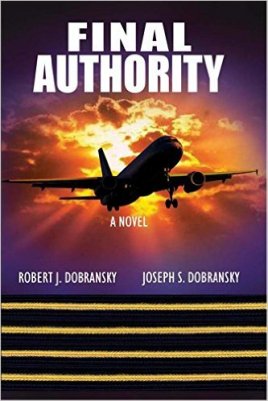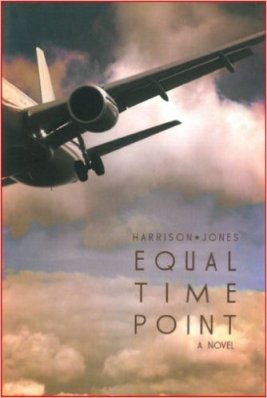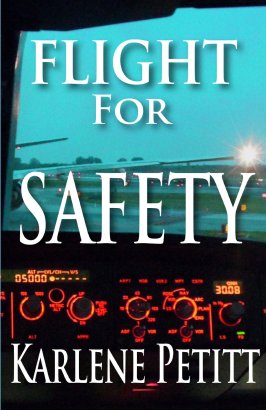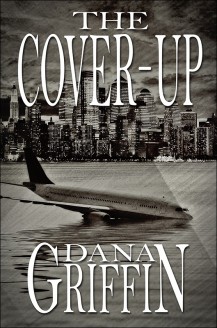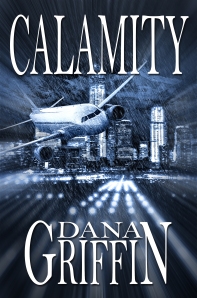 CHAPTER ONE
CHAPTER ONE
Friday, February 14th, 2:32 p.m. MST.
Denver approach air traffic controller Art Contu watched the blip on his radar screen. Contrails Airline’s flight 1917 had passed through its assigned altitude on its descent. Contu keyed his mic, “Contrails 1917, your crossing restriction at Fulla intersection is thirteen thousand. Climb and maintain thirteen thousand.”
Neither pilot responded. Contu frowned. “Contrails 1917, Denver approach. The crossing restriction at Fulla intersection is thirteen, one three thousand feet. Climb and maintain thirteen thousand.”
“Contrails 1917 has a dual engine flameout.” The pilot’s voice was hurried. “We’re declaring an emergency and need vectors to land immediately.”
Contu leaned closer to his radar screen. He had worked numerous aircraft with emergencies, but not one that had lost power to all of its engines. “Contrails 1917, Denver international is three o’clock and ten miles. Turn right heading two six zero. Say fuel and souls onboard.”
The pilots didn’t acknowledge his instructions. The blip on his screen continued south, taking the Contrails flight away from the only airport to which they could glide, if they turned now.
Contu swallowed. Were the pilots too busy to reply? “Contrails 1917, Denver is at your three thirty and fifteen miles. Turn right heading two seven zero.”
“Two seven zero.” The Contrails pilot’s voice was high. His words strung together. “We need the fire trucks. We have no power.”
The blip on Contu’s screen turned toward the approach end of runway two-six. “Contrails 1917, the emergency equipment has been alerted. Turn right heading two eight zero. Say fuel and souls on board.” The rescue workers needed that information to know how big a possible fire might be, and how many passengers, babies, and crewmembers would need to be pulled from the aircraft.
“United 865 going to tower,” the pilot of another flight said.
Contu mentally kicked himself. He’d been so wrapped up in Contrails’ emergency, he had ignored the other aircraft he was sequencing onto final. United should have already been told to contact the control tower for landing clearance. After acknowledging United’s transmission, he gave instructions to a couple of other flights, picked up the phone, and speed dialed the controller responsible for giving takeoff and landing clearances.
“Tower.”
“Contrails 1917, an ADB-150, has a total power loss.” Contu realized his voice was as rushed as the Contrails pilot’s. “I’m vectoring them for two-six.”
“They’ll be landing in a twenty-knot crosswind. The runway hasn’t been plowed in an hour and has two inches of snow.”
“At the rate they’re losing altitude, they’ll be lucky to make it to any runway,” Contu hung up. “Contrails 1917, runway two-six is eight miles. Turn right two nine zero.” The crosswind pushed the flight south, away from the runway.
The snow that had been falling hard over the last several hours had finally let up. “Contrails 1917, Denver twelve hundred overcast, five miles in blowing snow. Wind three three zero at twenty gusting to thirty.” Contu wiped the sweat from his forehead. During a normal landing, the pilots would have balked at landing on a snow-covered runway with a crosswind that strong. Now they had no choice.
Although the pilots didn’t acknowledge Contu’s instructions, their blip turned further north.
Contu squirmed; Contrails’ altitude read-out indicated they had descended to eight thousand feet. That put them twenty-seven hundred feet above the touchdown zone of two-six. At the rate they were losing altitude, they would slam into the ground short of the runway, tearing the airplane apart.
***
Denver air traffic tower controller Bradley Messano cleared United flight 865 to land on runway three-five-left, then looked out the tower’s windows to the east. He lifted a pair of binoculars and through them spotted the landing lights. The Contrails ADB-150, an aircraft similar in size and appearance to a Boeing 737, descended at a rate that lodged his heart in his throat. It would hit short of the approach lights. The foot of new snow would cushion its arrival but would make it almost impossible for rescue workers to reach the passengers and crew.
The flight aimed at the end of the runway but continued to drop too fast.
When it appeared the aircraft would impact, Messano braced himself on the counter surrounding the tower.
Except Contrails didn’t hit.
The aircraft flew at what looked like inches above the snow drifts. Then the right wing and nose rose. The left wingtip dragged through the snow, sluing the aircraft left.
The aircraft rose, the wings leveled, then banked right to realign with the runway.
The nose swung left and right with the wings rocking.
The aircraft cleared the approach lights by a few feet and continued to climb. “They’re going to make it,” Messano yelled out to no one in particular.
When over the end of the runway, the nose dropped. It swung to the south, pointing the airplane to the side of the runway. Messano braced himself again. The aircraft would touch down on the side of the runway. The snowbanks lining its edges would pull it off into the unplowed snow.
The right wing dipped, the nose slued to the north, rolling the wing further. The wingtip contacted the runway, yanking the nose further north.
The aircraft slammed down. The nose began to turn toward the center of the runway until the right main gear caught the snowbank on the side of the runway and yanked the aircraft off the pavement.
“Shit!” Messano yelled.
The nose gear snapped off, dropping the nose. It plowed a furrow, sending a cloud of snow into the air, making it impossible to see what happened for the next few seconds.
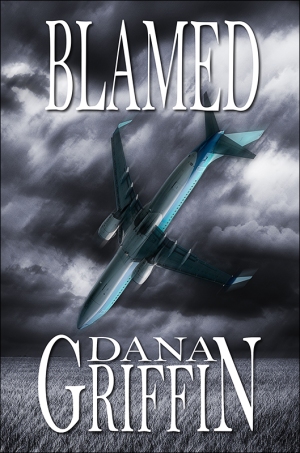 My airline thriller, Blamed, has been available as an eBook on Amazon for a month. The paperback version should be available the third week of September.
My airline thriller, Blamed, has been available as an eBook on Amazon for a month. The paperback version should be available the third week of September. Chapter One
Chapter One